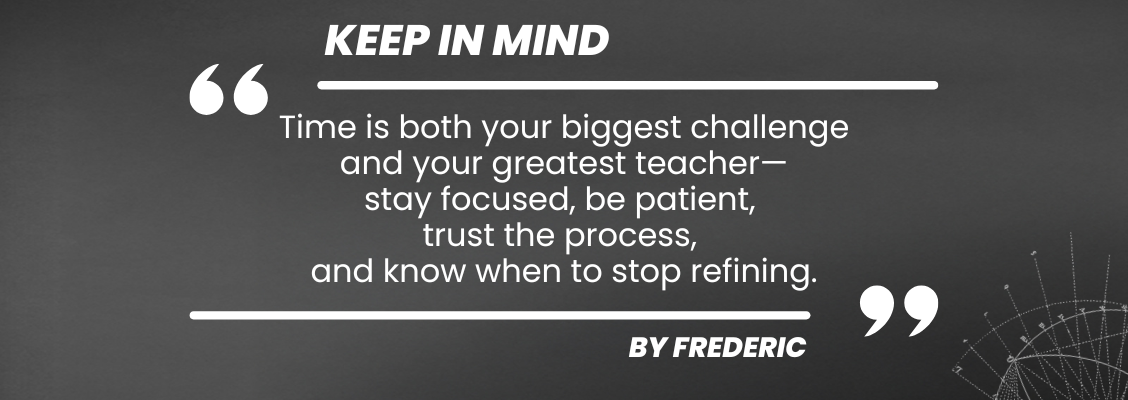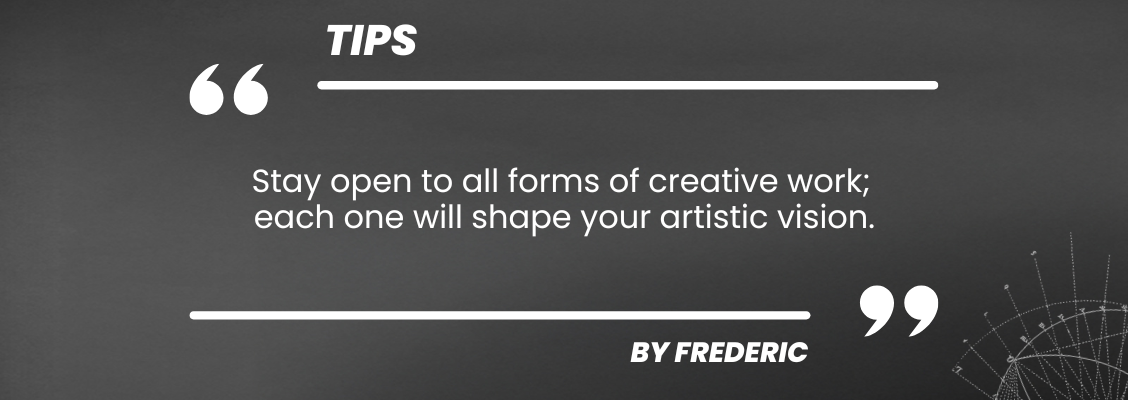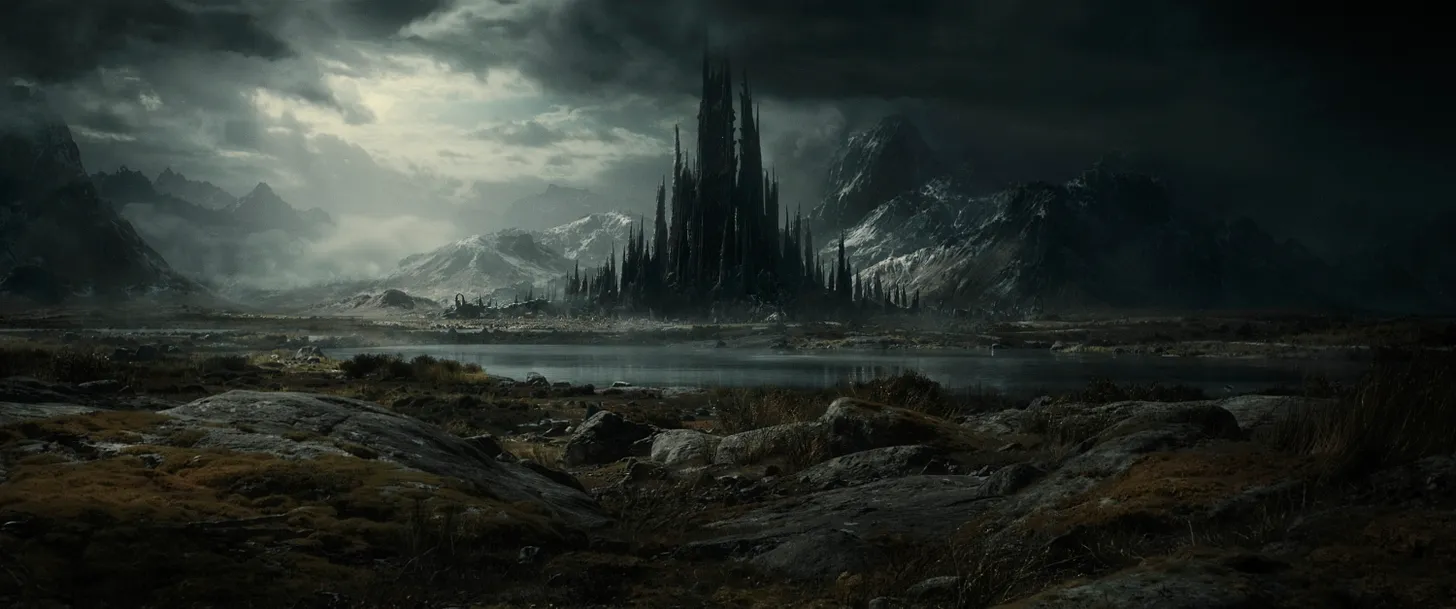
Meet the Yardeners – the passionate team at The Yard, who cultivate every day the seeds of creativity, transforming them into striking visual effects, fruitful collaborations, and unforgettable stories.
This week, we’re thrilled to introduce Frederic Perrin, our Senior Concept and Environment Artist. With more than two decades of experience in the animation and VFX industry, Frederic has honed his craft in illustration, concept art, digital matte painting, and CG environments for films, games, and publishing. After a career spent at France’s and Canada’s leading studios, Frederic continues to nurture his passion for visual storytelling here at The Yard.
Hello Frederic ! Could you please explain your role at The Yard ?
My role is to create environments and concept art for feature films and TV shows in the studio. I collaborate with the project team and supervisors to determine the best technical and artistic approach for each project. After discussions, I either sculpt and create assets, or build and refine environments to completion, or work on concept art to propose ideas—whether environment concept frames, creature designs, or anything else that needs to be imagined for the show.
What first inspired you to pursue a career in VFX and environment design?
I have always been drawn to environments, and my entire career has revolved around this passion. Thirty years ago, I started drawing and painting, practicing oils and acrylics, and then I had the opportunity to work on environments in animation. I spent around eight years in this field before moving into illustration for book covers.
Throughout this time, I was constantly inspired by films such as The Lord of the Rings, The Matrix, early special effects classics like The Ten Commandments, and, like many of us, Star Wars and Alien movies. Over the years, my fascination with VFX grew stronger, so when the chance arose to work as a concept artist and matte painter on a film, I jumped at it without hesitation.
I then continued working on numerous projects in France— including films, TV shows, and game trailers—before moving to Canada, where my inspiration continued to flourish while working at large studios like Rodeo FX and DNEG.
Some of Frederic’s screen inspirations:
What do you enjoy most about bringing sets and environments to life? Is there a particular aspect of the creative process that you find especially rewarding?
Bringing sets and environments to life in VFX is a delicate balance of imagination and credibility. In many ways, creating environments for VFX is similar to working in animation or illustration: you start by imagining and representing believable, immersive places. The main difference is in how you build them. In traditional animation or illustration, you can work from concept to final painting, and even a single brushstroke can suggest the shape of a cloud or the structure of a building.
In VFX, the process is more technically complex. The goal is to create, and achieve the most realistic render possible. It takes more time, but the reward is seeing the place you envisioned fully come to life. For example, on The Rings of Power – Season 2, creating the Gurdreth environment shots took a year to complete. Having that time to think, refine, and push every detail was an incredible experience.
Stills of the Gurdreth shots from The Rings of Power – Season 2 that Frederic worked on :
You’ve worked on a variety of genres throughout. How do you adapt your creative approach when designing environments for different styles or narratives?
For me, adapting starts by following the theme of the project. The first step is to dig into the story and understand its purpose and context. Before thinking about the environment or concept art to create, it’s essential to know what’s happening in the sequence: who the characters are, what they do or think, what they have built, and by whom it was built.
With this understanding, you can start imagining the environment as a character in its own right, giving it a personality — frightening, magical, poetic, etc. — that serves the story just like the characters do.
Next comes the building mindset: considering how the structures are constructed, which materials are used, and how to bring logic and life to the world you’re creating. If it’s a natural environment, the same principle applies: you imagine how nature would behave to form the environment you want to represent.
Finally, you use lighting to bring everything to life and reinforce the mood or feeling you intended from the very beginning.
Is there a particular project that stands out to you as especially memorable or meaningful ? What made it so impactful ?
Working on Denis Villeneuve’s Dune was definitely a memorable experience. I’ve always loved the books, so having the opportunity to work on the environments for that universe was truly special. I also met incredible people and artists on the project — it was a real pleasure.
There have been other great experiences too. The Rings of Power was another highlight — the story, the scale, and especially the chance to work on a single environment for an entire year. It’s rare to have that kind of time to explore, refine, and push the limits of what you want to achieve. Some might imagine it was exhausting, but when you’re inspired by a shot, it can be a deeply fulfilling process — much like an artist spending a year or more on a painting or sculpture.
I’m naturally drawn to natural settings — mountains, rocks, forests — but I’m equally fascinated by sci-fi, fantasy, and fantastic worlds, where I can design futuristic cities, robots, creatures, or characters. In the end, every project brings the same exciting opportunity: to imagine and create freely.
Projects such Venom, Moonfall, I Kill Giants, The Returned, as well as more recent projects at The Yard, were also fantastic experiences, especially because they allowed me to return to the roots of what I love — concept art, painting, drawing, sculpting, and imagining worlds from a blank page.
What are the biggest challenges you face when creating these worlds? How do you overcome them ?
Time. For me, time is the biggest challenge — and it has been since the very beginning, even back when I was working with oils.
Over the years, I’ve learned to think and craft in the most efficient way possible, trying to capture the main idea quickly and refine it through rough sketches and fast concept art. Still, it’s often a real challenge, because you always want to explore an idea deeply and sometimes you simply don’t have the time to do it the way you’d like. An image is never truly finished — there’s always room to add, remove, or adjust elements. At the same time, we are our own first critics, often demanding of the work we produce. That’s why it’s especially gratifying when an image “works », meaning when a vision comes to life, resonates with others, and evokes the reaction you were hoping for.
Time also becomes a factor when moving into the detailed phase of a final render. You know it will take a long time to achieve, so you have to switch into an endurance mindset by staying focused, patient, and making sure not to lose yourself in unnecessary details or endless final touches.

What major evolutions do you see upcoming in the field of environment and concept art ?
AI is an important topic in today’s artistic evolution.
In the past, we’ve experienced two major shifts. First with digital art (2D), and then with 3D. The difference between those changes and the arrival of AI kn our field is quite different. When digital tools emerged, it was challenging for many artists, but if you came from a traditional background, you could still draw and paint in much the same way. It was an adjustment, but still a continuation of your craft. With AI, you don’t need to draw, paint, or sculpt anymore—you simply stop.
When I had to start to paint digitally, my goal was to find a way to handle the tool so it felt as close as possible to traditional painting. I wanted to mix and find colors, to “think” the picture—in the same way as traditional painting,—with room for happy accidents or mistakes, and try again. Interestingly, some of the methods I developed digitally later influenced how I approach traditional painting.
Over the past 30 years, I’ve worked to improve my skills — drawing, painting, sculpting, and modeling — and I’ve seen my work evolve through both failures and successes, analyzing and understanding why. That growth came from direct engagement: using my hands and mind, learning from tools, and making deliberate creative choices. Every stage of that process has been connected, each experience informing the next.
With AI, I’m not yet sure how that kind of personal evolution translates. The way AI is currently used in image-making tends to bypass the mind and hands-on learning process—the moments of trial, correction, and understanding that shape an artist’s eye. In that regard, it’s not evolution—I see more regression about this. You don’t practice or analyze composition, perspective, light, or color. That’s why I think it’s worth reflecting on how we can keep the learning and crafting aspects alive as technology develops.
Still, I can see potential for AI to be a helpful tool in VFX, especially for repetitive or technical tasks that take time away from the creative side. If it can support artists by streamlining those areas — giving us more room to think, imagine, and create — then it could become a genuinely valuable part of the process.

Any advice you’d give students or aspiring artists who want to build a career in CG Environment ?
I would say: keep an open mind towards all forms of creative work. There’s VFX, of course, but also animation—both traditional and digital—as well as 2D painting, drawing, and even practical environment models made from wood or clay. CG is just one part of this broad creative spectrum.
An environment artist is, finally, a generalist artist. So staying open and curious about different ways of creating is a strong foundation. Try new things, learn, and you’ll eventually discover the area that you like most.
For me, drawing is the most fundamental skill. It gives you so many tools to analyze and create. It’s where everything begins: sketches, ideas, rendering, lighting, perspective, volume, and « undesrstanding a picture ». Then come color and light, as well as animation and photography. All of them are directly useful when working on CG environments.
Here are a few concrete examples of how traditional skills translate into digital ones:
-
Drawing → Environment composition and perspective / matte painting / concept art
-
Painting → Environment lighting, shading, and texture / digital matte painting / concept art
-
Photography → Environment composition / camera / layout and animation / matte painting / concept art
-
Sculpting → Environment modeling / assets creation / concept art
In parallel, it’s important to learn software tools because we use many, and they’re constantly evolving. You don’t need to master everything right away. As long as you understand the principles and stay adaptable, you’ll continue learning on the job, often with the help of your team. In VFX or CG animation, you must be technically minded but perfection will come with time.


